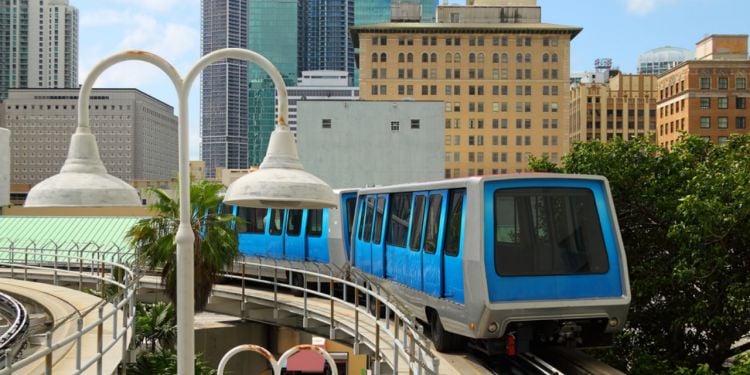
The Miami work commute can be quite challenging, and the traffic there is considered to be some of the worst in Florida. Getting to and from work, especially if you're in the central areas of Miami-Dade, Palm Beach, and Broward counties, is particularly difficult on weekdays; these counties experience heavy traffic congestion during working hours. On average, it takes about 90 minutes for a typical commuter to reach their workplace. The congestion level in certain parts of the city is comparable to that of cities like New York and Washington.
Part of the problem is that many employees who work in the downtown area struggle to afford city apartments. As a result, they end up living quite a distance from where they work. However, there are some things you can do to make your commute easier and some other options for getting around town.
Public transportation in Miami
For expats new to Miami, tackling the city's traffic can be a real challenge. Thankfully, Miami offers a range of public transportation options that can help you beat the daily commute.
Miami-Dade Transit offers various payment options, including the EASY Card and EASY Ticket. These allow you to pre-load money and travel passes onto your card for seamless travel across different modes of public transport. There are also several apps available that provide real-time information on public transport schedules, routes, and delays. Apps like "Miami-Dade Transit Tracker" can help you plan your journeys more efficiently. Miami's traffic can vary, so it's a good idea to plan your route and departure time. Avoid peak hours whenever possible to reduce congestion-related stress and try to keep an eye on local news and transportation updates to stay informed about any disruptions, construction, or changes to routes.
Metrorail and Metromover
Metrorail is Miami's rapid transit system, providing a convenient way to travel across the city. The Metromover is a free automated people mover that connects key downtown areas. Both are operated by Miami-Dade Transit and offer an affordable and efficient option for daily commuting. Metrorail fares start at $2.25.
Metrobus
The Metrobus network covers a wide area, providing access to various neighborhoods and connecting to major transit hubs. It's a cost-effective way to navigate Miami's suburbs and downtown.
Trolley services
Miami offers free trolley services in specific neighborhoods, providing a convenient way to get around without spending a dime. These trolleys are especially popular in areas like Miami Beach and Coral Gables. The trolleys are entirely free to ride and available to everyone.
Tri-Rail
If you live farther from the city, Tri-Rail is a commuter rail service that connects Miami to neighboring cities and counties. It's an excellent option for those living in the suburbs who need to get to the city for work.
Other options for commuting to work in Miami
Carpooling and ridesharing
To further beat the traffic, consider carpooling with colleagues or using rideshare services like Uber and Lyft. These options can help you save time and money on your daily commute.
Bike and walk
Depending on your location, biking and walking might be viable short-distance alternatives. Some areas are bike-friendly and have dedicated paths and lanes.
Taxis
Taxis in Miami can be convenient, particularly when leaving the airport, but they can also be expensive. The fare is calculated based on the distance you travel per kilometre, averaging around $2.50 per kilometre. While taxis are readily available and easy to find, especially at the airport and city center, they may not offer the same level of reliability as rideshare services like Uber and Lyft.
In addition to traditional taxis, you'll also come across small electric cars known as "Freebee" around the Miami Beach area. These cars have ads on the top and sides and are completely free for passengers to use. It's a unique and cost-effective way to get around the area, particularly for short distances.
Remember that tipping your taxi driver is a customary practice and highly encouraged in the USA. Services like Uber and Lyft allow you to build the tip into the fare when using the app.
Useful links:
We do our best to provide accurate and up to date information. However, if you have noticed any inaccuracies in this article, please let us know in the comments section below.











